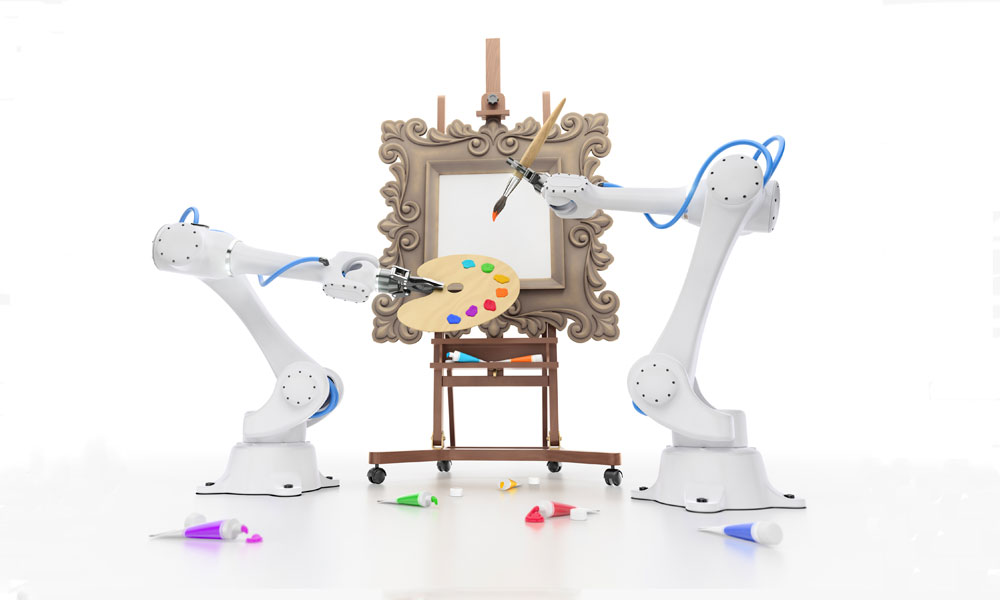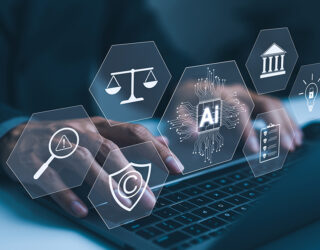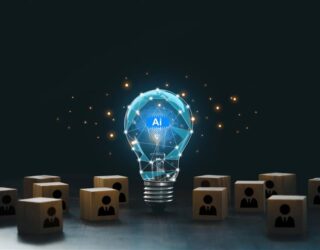The practical application of artificial intelligence in fields such as artistic creation or innovation poses a whole range of brand new challenges for IP. The article analyzes the main milestones in this matter and the response that is being offered by several institutions so far.
Lawmakers are increasingly focusing on artificial intelligence (AI). In February, the European Commission published the white paper on artificial intelligence, presenting the European strategy for achieving a regulatory framework that will create an ecosystem of excellence and trust. One of the most pressing concerns of the Commission is the liability arising from the widespread use of AI and other disruptive technologies. In fact, at the same time as the white paper, the Commission also published its Report on the safety and liability implications of Artificial Intelligence, the Internet of Things and robotics, which supplements another similar report from December 2019 on liability for artificial intelligence and other emerging digital technologies.
AI has an effect on several areas of law and, as is to be expected, this includes intellectual property law as well. For several years now, we have been hearing about computer-written lyrics (TheseLyricsDoNotExist.com), musicals (Beyond The Fence), short films (Sunspring), poetry (WASP), press articles (Bertie) and even machine learning (AutoML-Zero) algorithms. Whether or not these are truly independent and original creations equivalent to human creations is debatable, but, no matter what, AI is certainly playing an increasingly more active role in the creation process.
In the world of visual arts, The Next Rembrandt project marks a before and an after. This initiative, supported by ING, Microsoft, Delft University of Technology and the Mauritshuis and Rembrandthuis museums, applies big data and other technological advances to the artistic world. The result is a Rembrandt that is not from Rembrandt, a new painting created using AI and 3D printing that could be attributed to the Dutch genius. The painting replicates his style based on the themes of his paintings and makes us question our idea of artistic work.
As far as patents are concerned, a few weeks ago we heard the decision by the European Patent Office (EPO) on the first two European patent applications that named an artificial intelligence system as an inventor (DABUS case). The EPO refused both applications on the grounds that they did not meet the requirements of article 81 and rule 19 of the European Patent Convention and that a machine cannot be designated as an inventor. These decisions followed Professor Noam Shmetov’s position taken in a February 2019 report – commissioned by the EPO itself – on the regulatory framework of inventorship in inventions involving AI in the most relevant jurisdictions. The document concluded that none of the patent law regimes in the countries analyzed allow for AI systems to be considered as an inventor and, furthermore, that the present legal landscape is not equipped to facilitate a definition of inventorship that includes AI.
Dr. Ryan Abbott (head of the DABUS team) defends a different approach and considers that “inventive AI may become a significant part of research and development. When it does, it will be seriously problematic if we lack clear rules on whether AI-generated inventions can be protected, who, or what, should be listed as an inventor, and who owns these inventions and related patents.”
The European Parliament is also closely following this matter and has just published a draft report on intellectual property rights for the development of artificial intelligence technologies, with several recommendations and declarations, including the advisability of reviewing current policy on trademarks and designs, as these can be generated autonomously by AI applications or the inadvisability of imparting legal personality to AI systems.
According to a recent WIPO study, there has been a substantial increase in AI-related patents, with IBM, Microsoft, Toshiba, Samsung and NEC filing the greatest number of applications. Two figures illustrate this trend: over 21,000 patent applications related to artificial vision were filed in 2016, and AI robotics applications increased by 265% between 2013 and 2016.
The WIPO continues to study the impact of AI in intellectual property and is reviewing the over 250 replies it received to the public consultation on the subject, which posed important questions such as:
- Are there seen or unforeseen consequences for copyright on bias in AI application?
- Should any policy or practical measures be taken to ensure accountability for decisions made in the prosecution and administration of IP applications?
- Should the law permit or require that design protection be granted to an original design that has been produced autonomously by an AI application?
- If new IP rights were to be considered for data that feeds AI algorithms, what IP rights would be appropriate: exclusive rights, rights of remuneration, or both?
We do not have a conclusive answer for these questions yet. However, this is just the tip of the iceberg, and there is no doubt that artificial intelligence is going to be one of the most relevant technologies of this decade. As jurists, we need to properly understand its technical and business implications if we wish to successfully manage to the numerous legal challenges AI will pose.
Garrigues Intellectual Property Department






